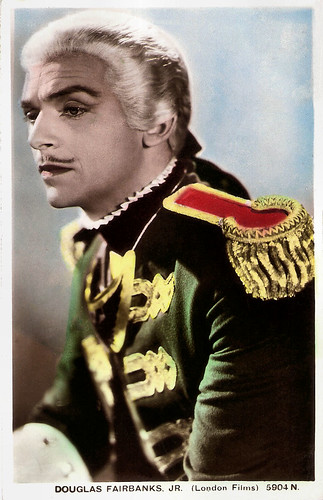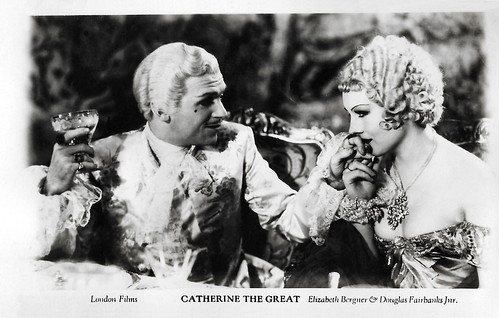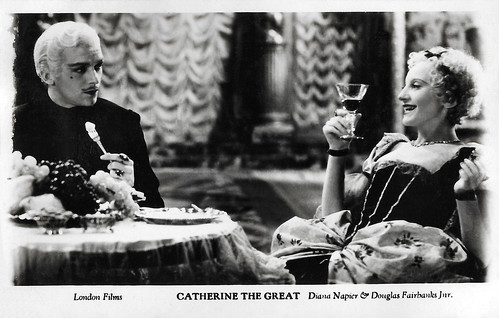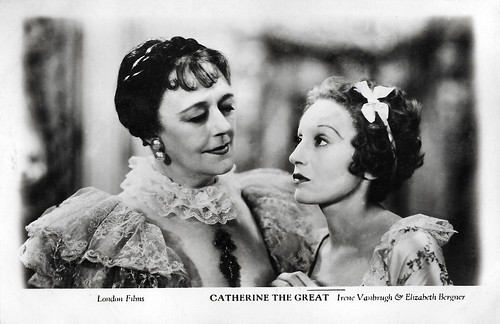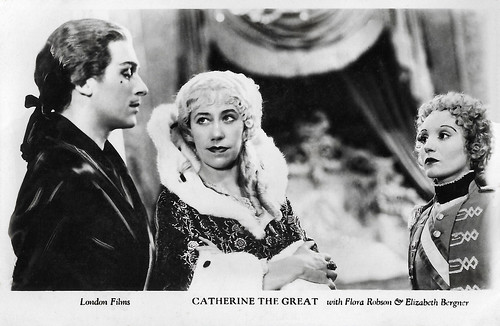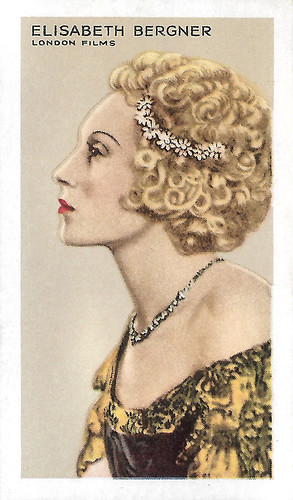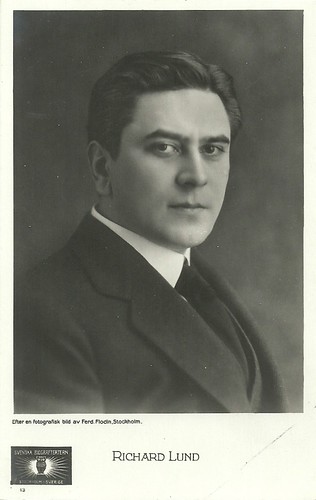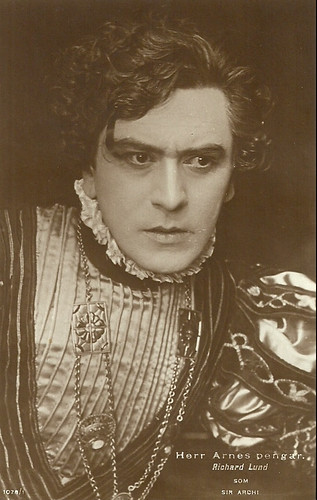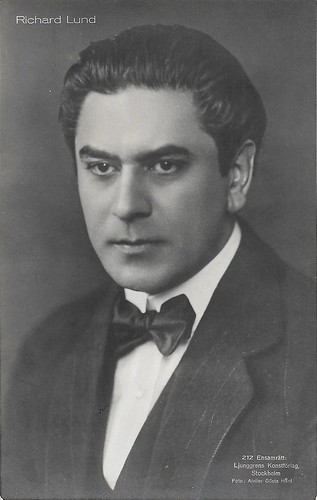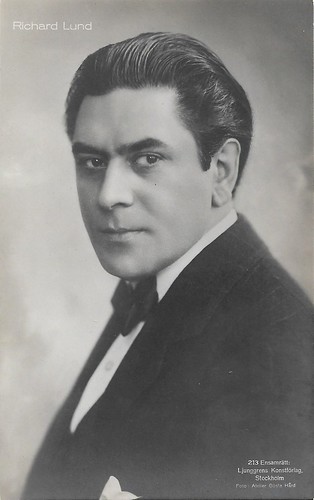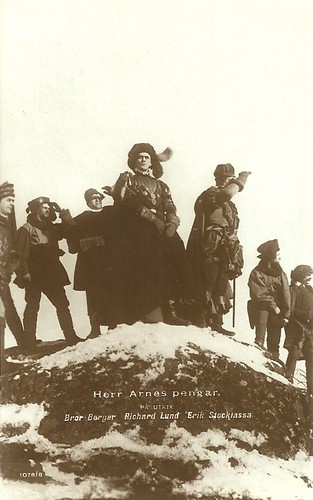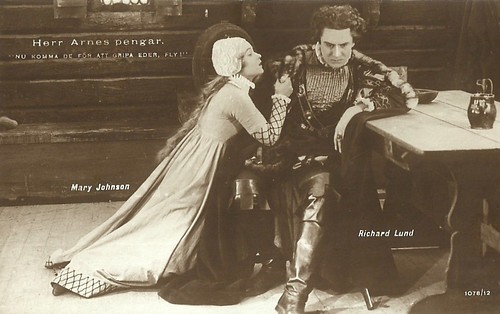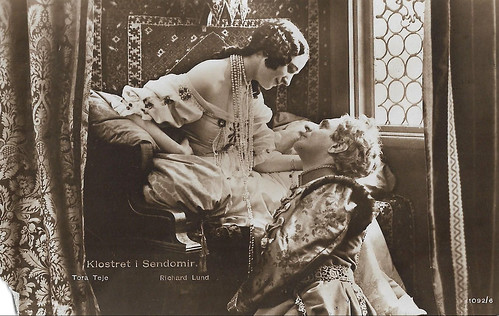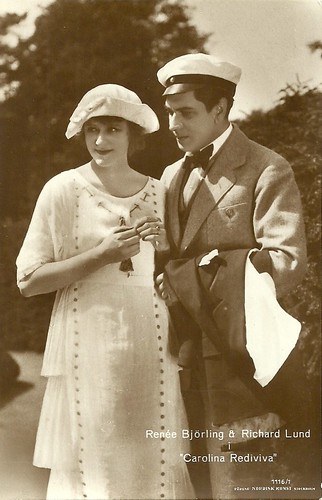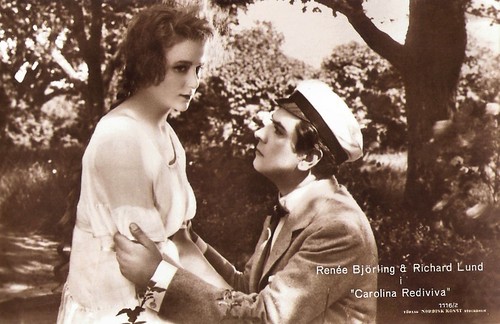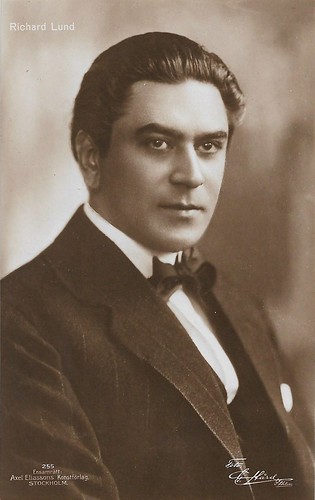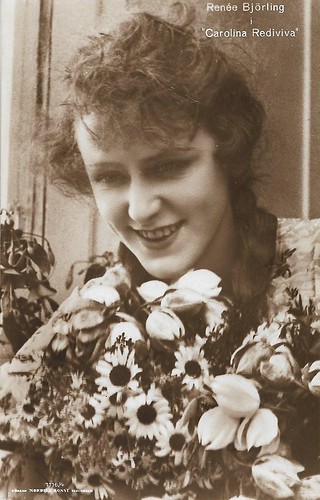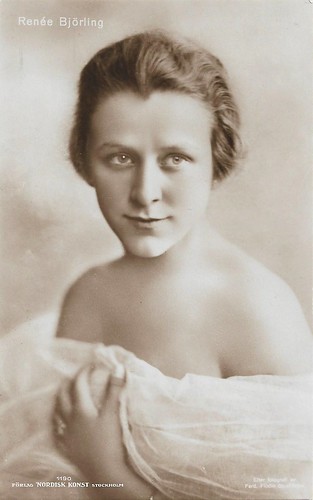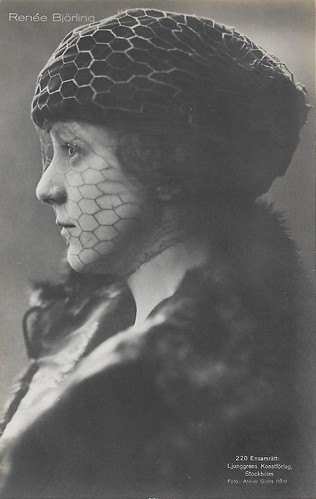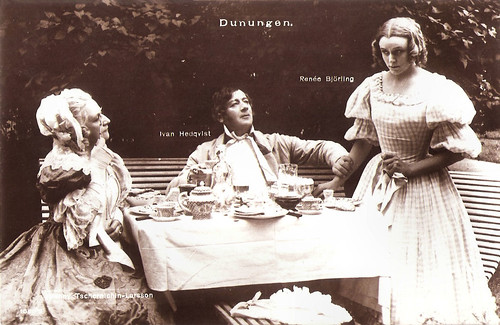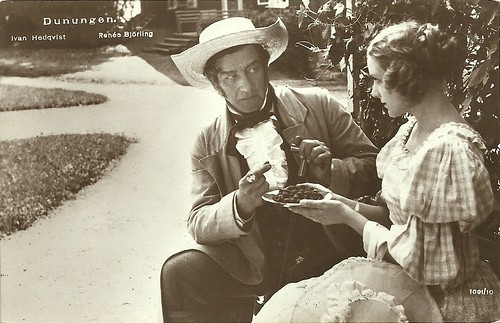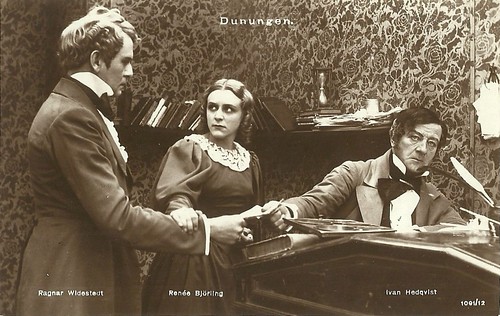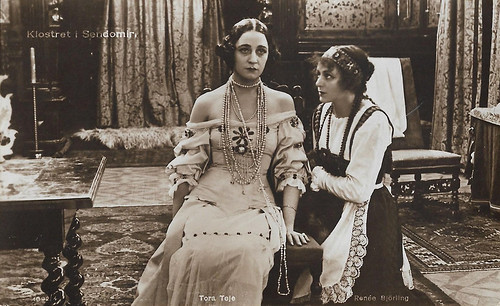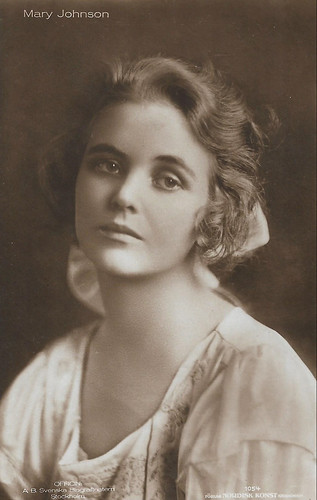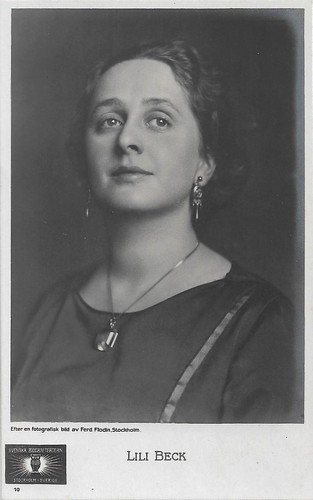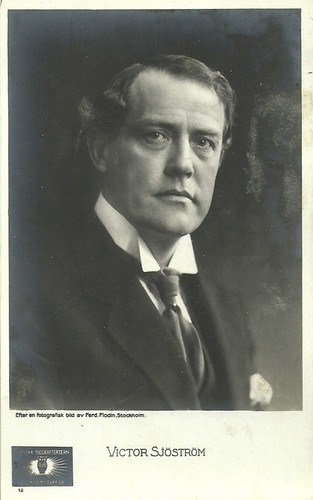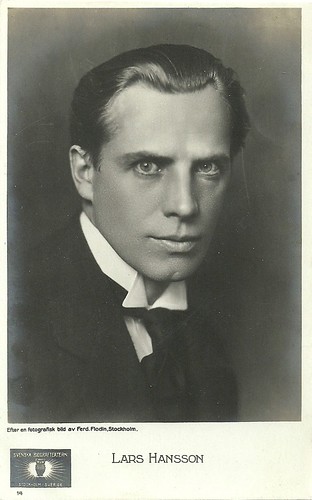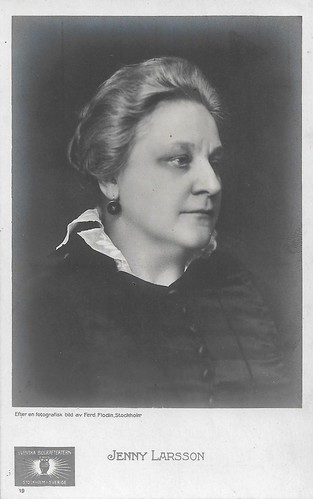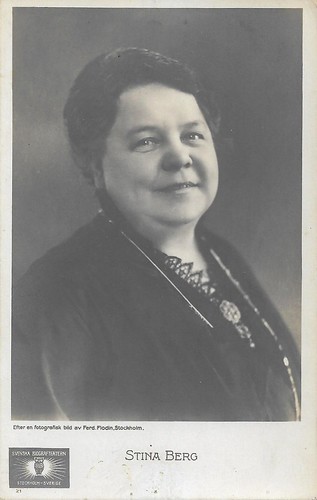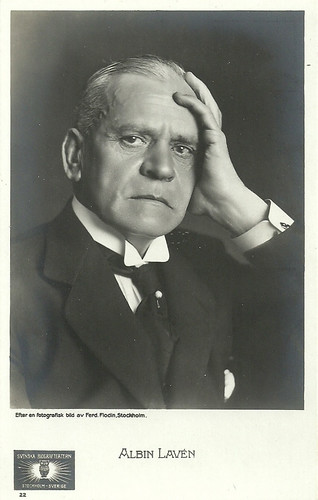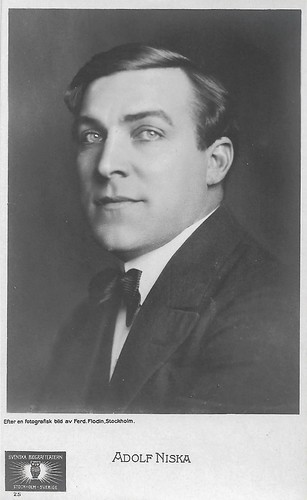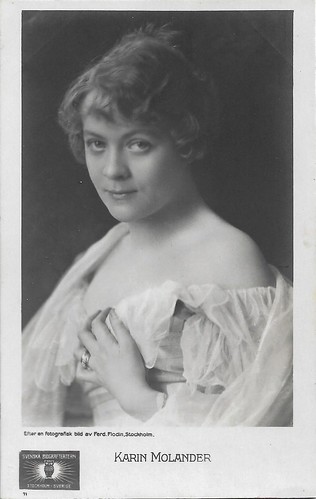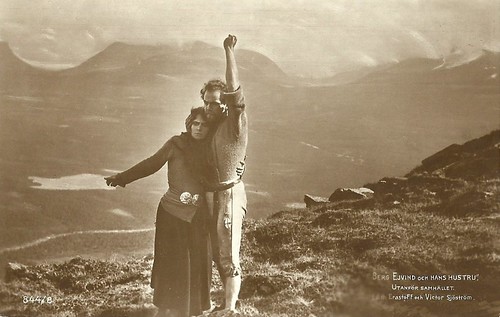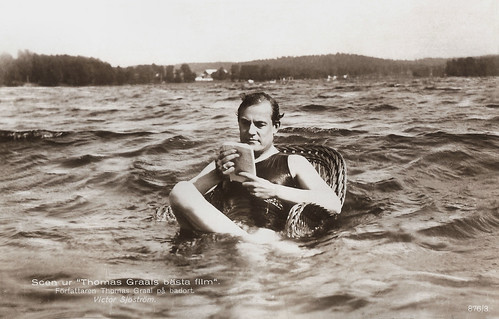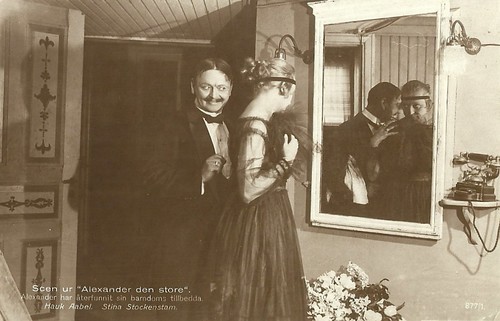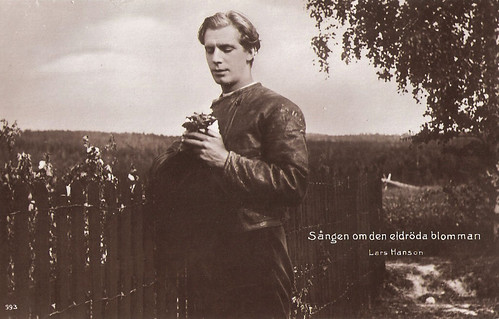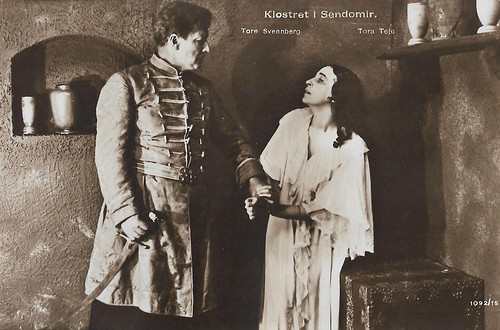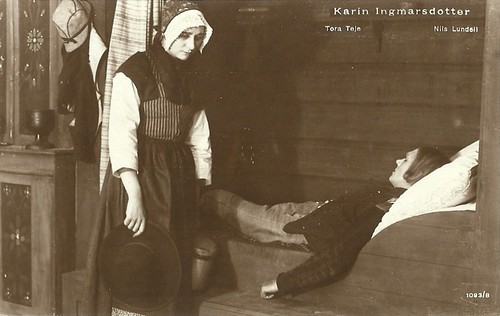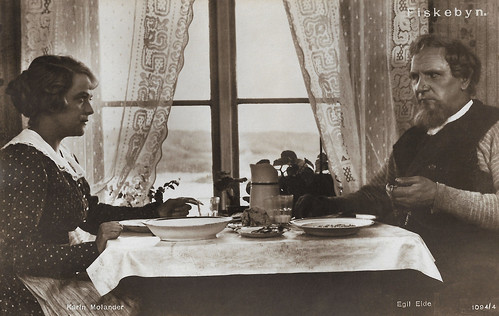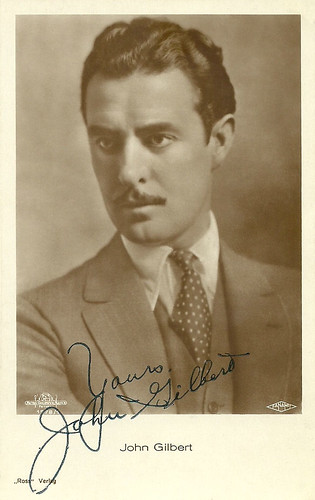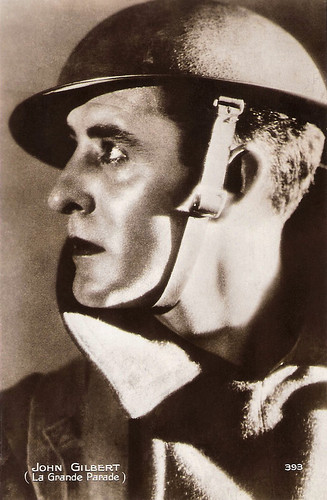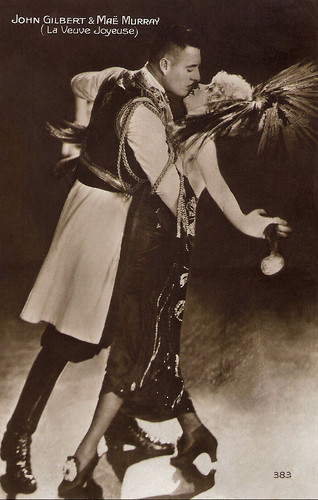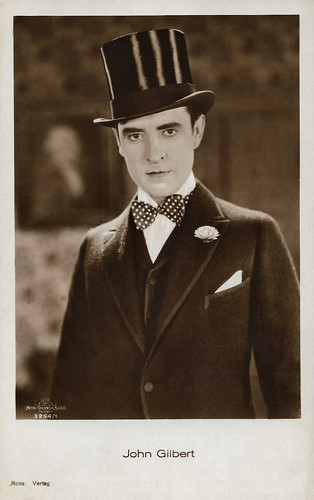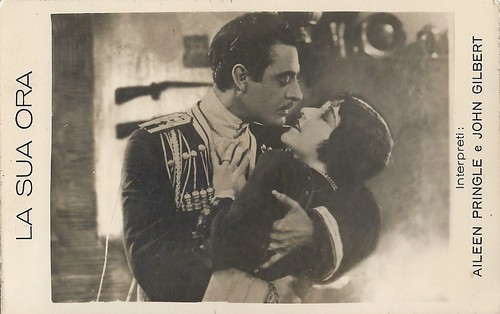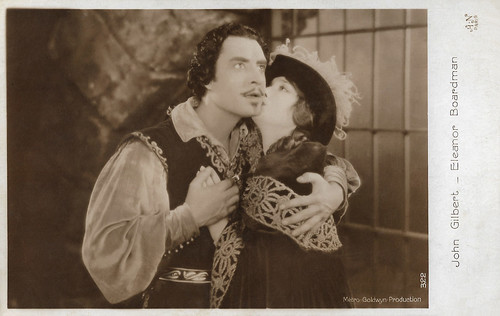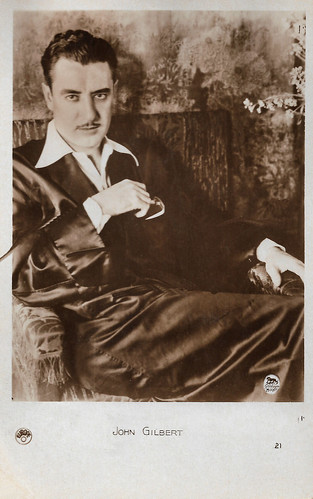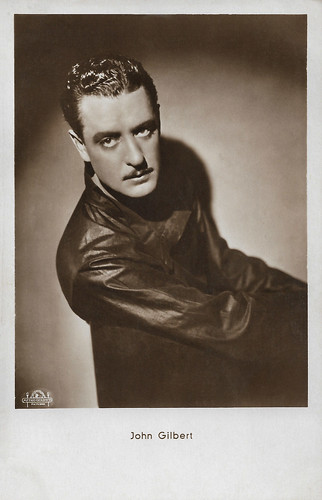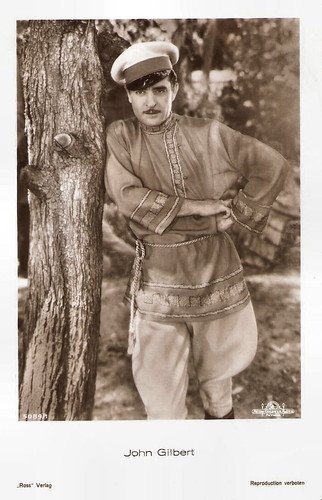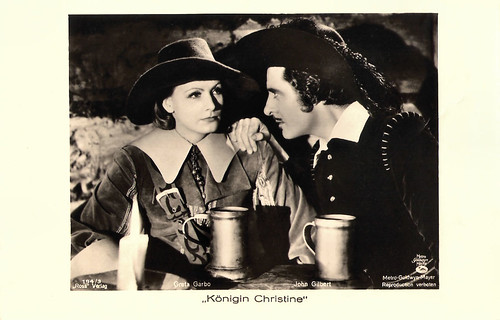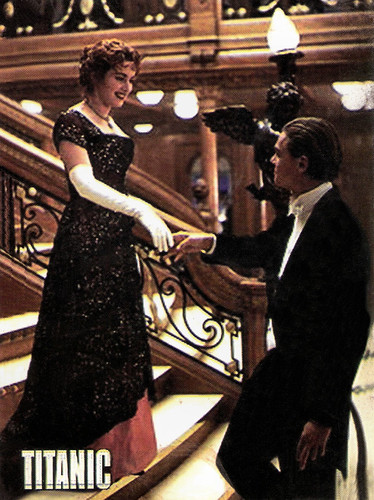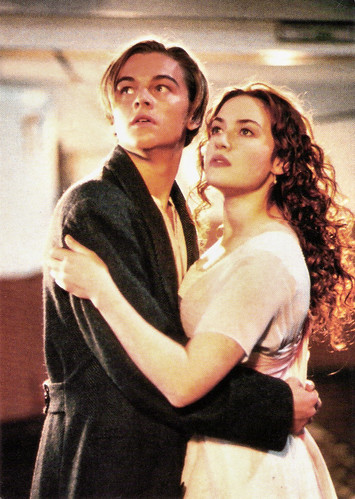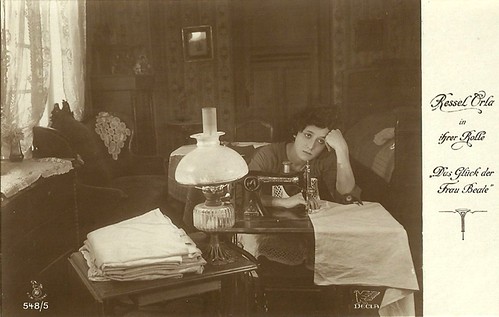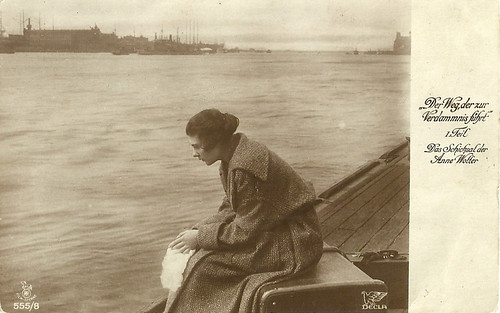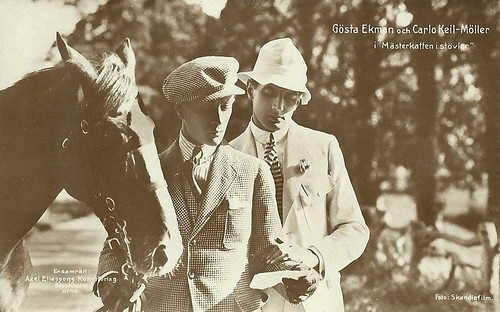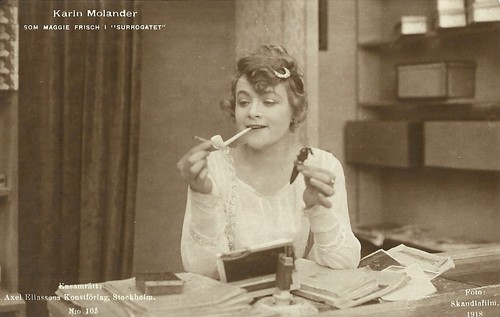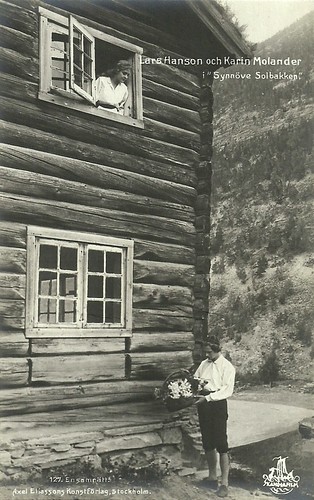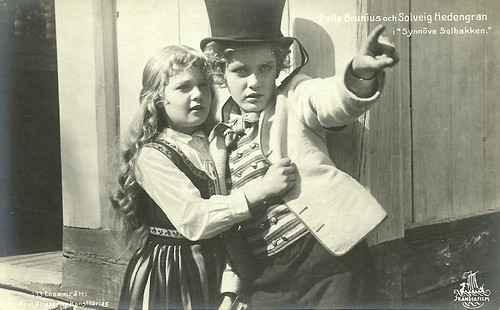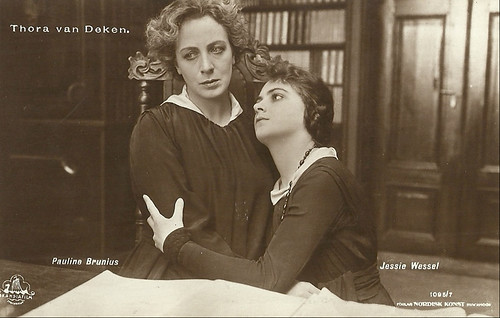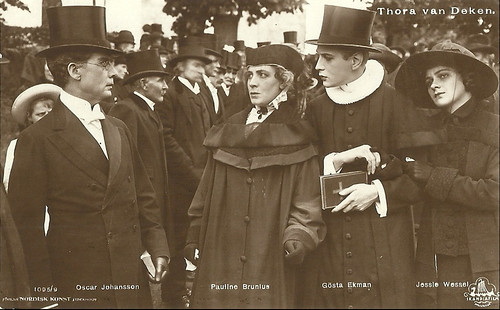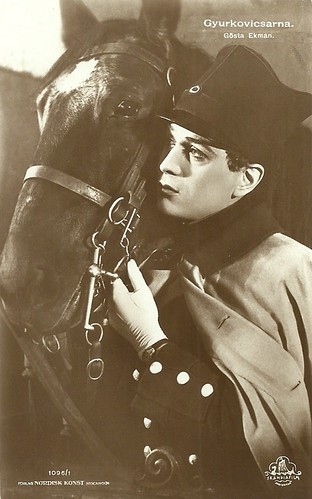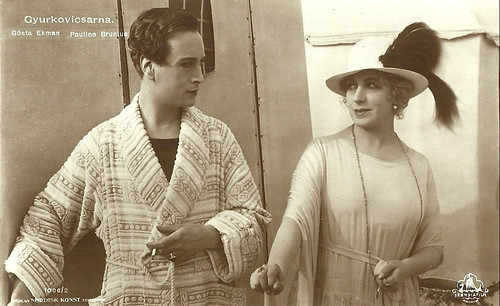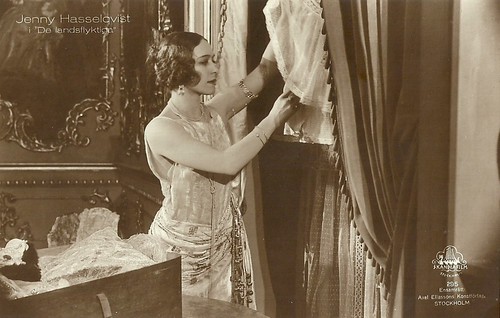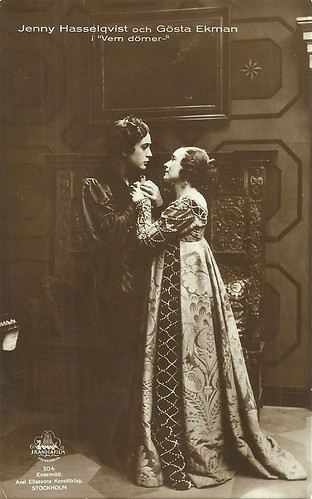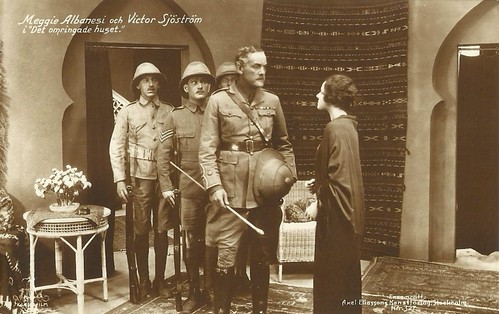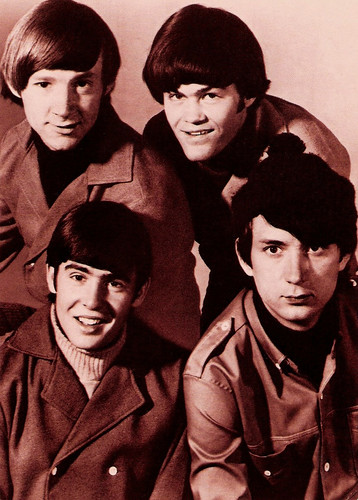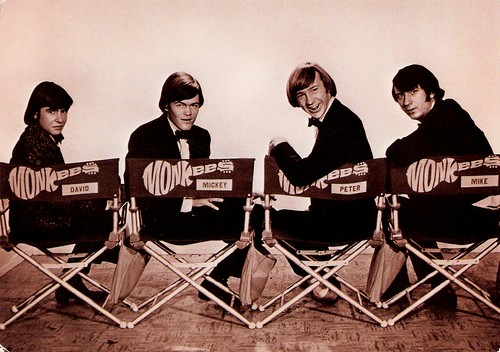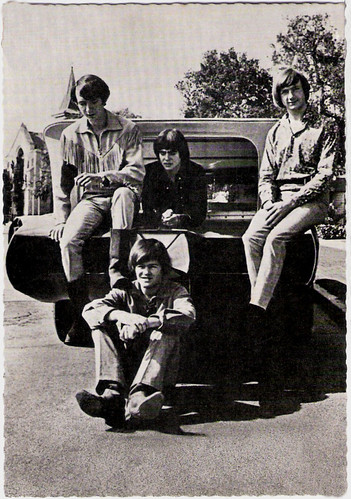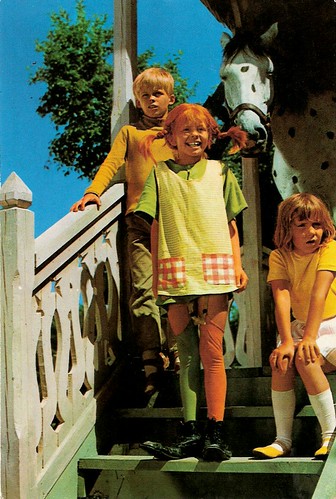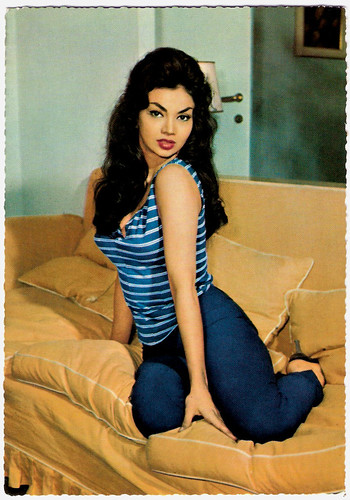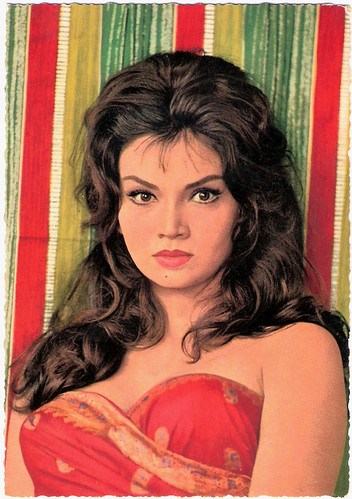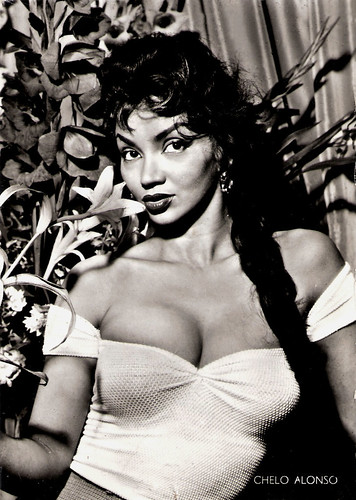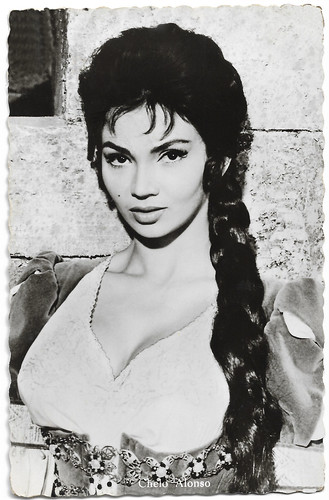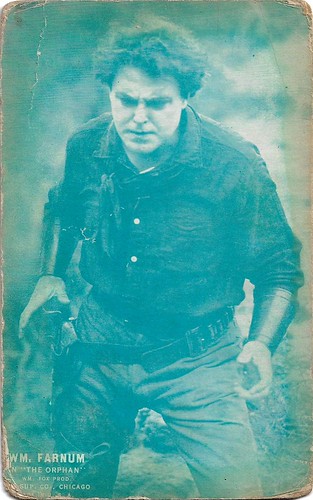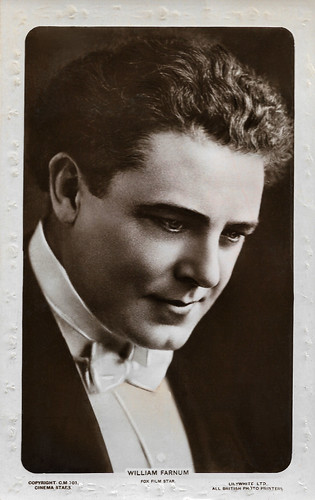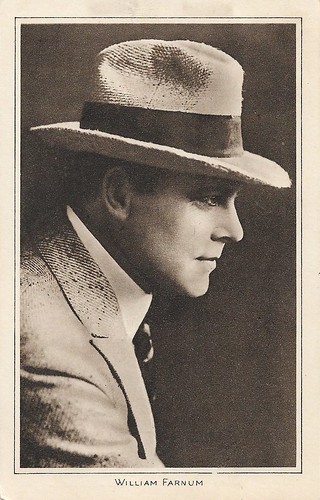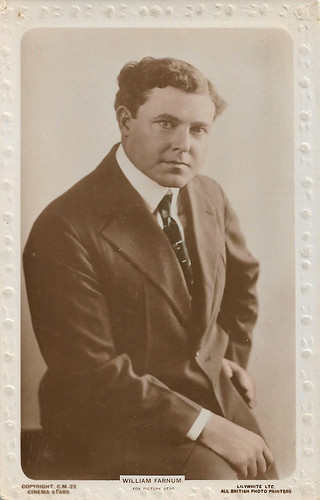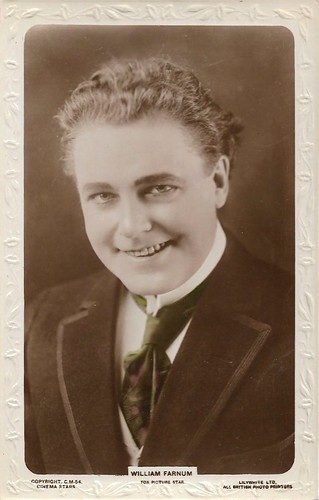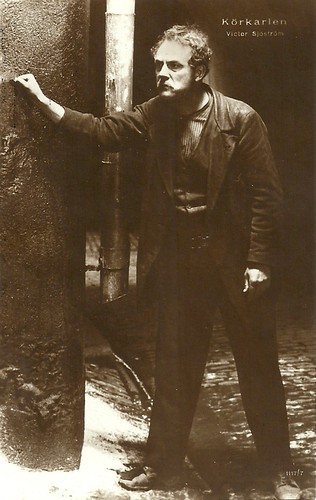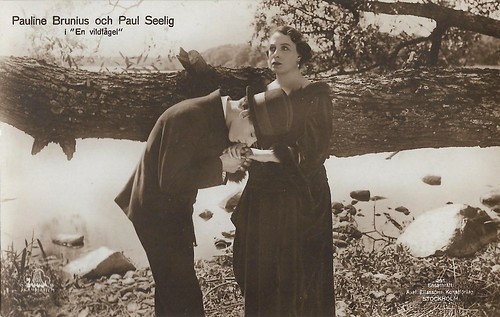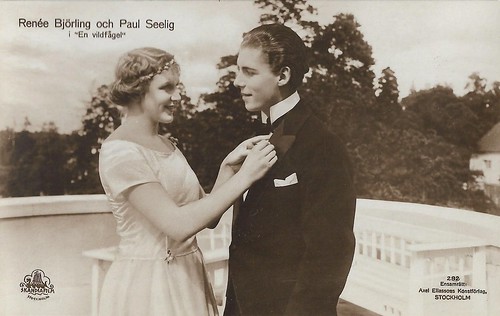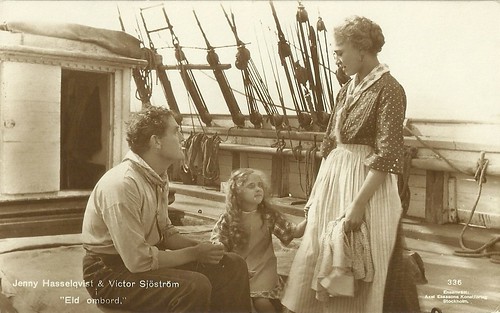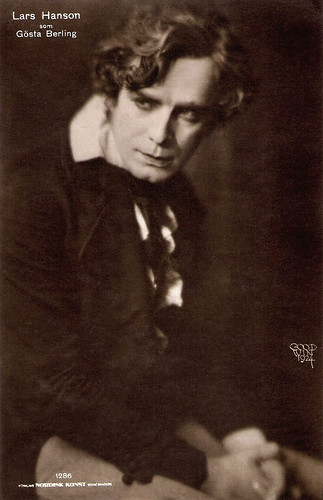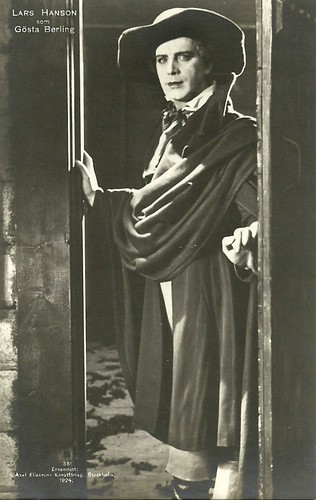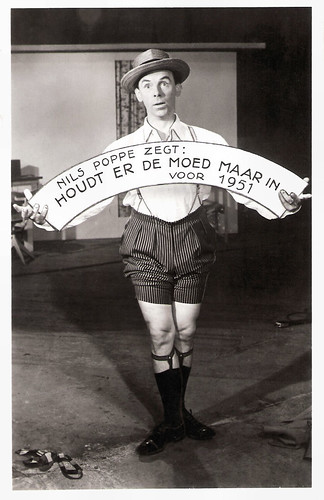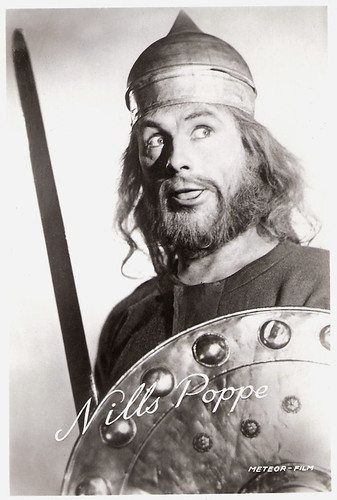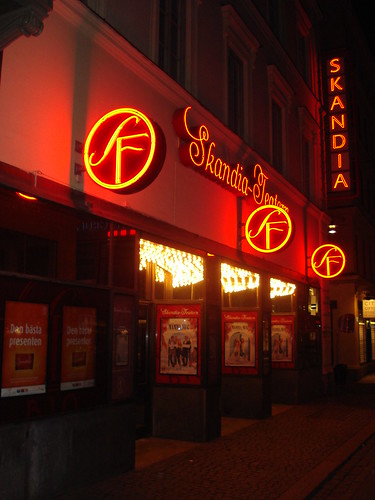Olivia de Havilland (1916) is a Japanese-born British-American former actress, whose career spanned from 1935 to 1988. She appeared in 49 feature films, and was one of the leading stars during the golden age of Classical Hollywood. She is best known for her early screen performances in The Adventures of Robin Hood (1938) and Gone with the Wind (1939), and her later award-winning performances in To Each His Own (1946), The Snake Pit (1948), and The Heiress (1949).
![Olivia de Havilland]()
Belgian postcard by Victoria, Brussels, no. 639/24. Photo: Paramount.
![Olivia de Havilland]()
British Real Photo postcard, no. 163. Photo: Warner Bros. / Vitaphone Pictures.
![Olivia de Havilland]()
French postcard by Viny, no. 124. Photo: Warner Bros.
![Olivia de Havilland]()
British Real Photograph postcard, no. 253.
![Olivia de Havilland]()
German postcard by Kolibri-Verlag, no. 294. Photo: Paramount.
Olivia Mary de Havilland was born in 1916, in Tokyo, Japan, to British parents. Her mother was the former film and stage actress Lilian Fontaine (Lilian Augusta Ruse), and her father was an English professor and patent attorney, Walter Augustus de Havilland. He was the author of the 1910 book The ABC of Go, which provides a detailed and comprehensive description of the Japanese board game. Her sister, Joan, later to become famous as Joan Fontaine, was born the following year.
Her surname comes from her paternal grandfather, whose family was from Guernsey in the Channel Islands. Her parents divorced when Olivia was just three years old, and she moved with her mother and sister to Saratoga, California. At her high school, she fell prey to the acting bug. She made her acting debut in amateur theatre in Alice in Wonderland.
After graduating, Olivia enrolled in Mills College in Oakland, where she participated in the school play A Midsummer Night's Dream and was spotted by Austrian director Max Reinhardt. She so impressed Reinhardt that he picked her up for both his stage version and, later, the Warner Bros. film version in 1935. She again was so impressive that Warner executives signed her to a seven-year contract.
No sooner had the ink dried on the contract than Olivia appeared in three more films: The Irish in Us (Lloyd Bacon, 1935) with James Cagney, Alibi Ike (Ray Enright, 1935), and Captain Blood (Michael Curtiz, 1935), with the man with whom her career would be most closely identified, heartthrob Errol Flynn.
They acted together in seven more films: The Adventures of Robin Hood (Michael Curtiz, William Keighley, 1938), The Charge of the Light Brigade (Michael Curtiz, 1936), Four's a Crowd (Michael Curtiz, 1938), Dodge City (Michael Curtiz, 1939), The Private Lives of Elizabeth and Essex (Michael Curtiz, 1939), Santa Fe Trail (Michael Curtiz, 1940), and They Died with Their Boots On (Raoul Walsh, 1941). Both are also featured in a ninth film, Thank Your Lucky Stars (David Butler, 1943), although in separate scenes. Years later, she confessed that she had an intense crush on Errol Flynn during the years of their filming, saying that it was hard to resist his charms.
![Olivia de Havilland]()
French postcard, no. 706. Photo: Warner Bros.
![Olivia de Havilland]()
French postcard by Viny, no. 124. Photo: Warner Bros.
![Olivia de Havilland]()
French postcard by Editions P.I., Paris, no. 285. Photo: Warner Bros.
![Olivia de Havilland in The Charge of the Light Brigade (1936)]()
Vintage postcard. Photo: publicity still for The Charge of the Light Brigade (1936).
Olivia de Havilland achieved her initial popularity in romantic comedy films, such as The Great Garrick (1937), directed by James Whale. In 1939 Warner Bros. loaned her to David O. Selznick for the classic Gone with the Wind (Victor Fleming, 1939). Playing the sweet Melanie Hamilton, Olivia received her first nomination for an Academy Award for Best Supporting Actress, only to lose out to one of her co-stars in the film, Hattie McDaniel.
After GWTW, Olivia returned to Warner Bros. and continued to churn out films. In 1941 she played Emmy Brown opposite Charles Boyer in Hold Back the Dawn (Mitchell Leisen, 1941), which resulted in her second Oscar nomination, this time for Best Actress. Again she lost, this time to her sister Joan Fontaine for her role in Suspicion (Alfred Hitchcock, 1941).
Relations between the sisters were never strong and their mutual dislike and jealousy escalated into an all-out feud after Fontaine won the Oscar. Despite the fact that de Havilland went on to win two Academy Awards of her own, they remained estranged. In a rare act of reconciliation, Olivia and her sister Joan celebrated Christmas 1962 together along with their then-husbands and children.
Denny Jackson at IMDb: "After that strong showing (in Hold Back the Dawn), Olivia now demanded better, more substantial roles than the "sweet young thing" slot into which Warners had been fitting her. The studio responded by placing her on a six-month suspension, all of the studios at the time operating under the policy that players were nothing more than property to do with as they saw fit.
As if that weren't bad enough, when her contract with Warners was up, she was told that she would have to make up the time lost because of the suspension. Irate, she sued the studio, and for the length of the court battle she didn't appear in a single film. The result, however, was worth it. In a landmark decision, the court said not only that de Havilland did not have to make up the time, but that all performers were to be limited to a seven-year contract that would include any suspensions handed down. This became known as the 'de Havilland decision'; no longer could studios treat their performers as mere cattle."
![Leslie Howard and Olivia de Havilland in Gone with the wind (1939)]()
British postcard in the Picturegoer Series, London, no. W. 348. Photo: David O'Selznick Production / Metro-Goldwyn-Mayer. Publicity still for Gone with the Wind (Victor Fleming, 1939) with Leslie Howard.
![Leslie Howard, Olivia De Havilland and Vivien Leigh in Gone with the wind (1939)]()
British postcard in the Picturegoer Series, London, no. W. 345. Photo: David O'Selznick Production / Metro-Goldwyn-Mayer. Publicity still for Gone with the Wind (Victor Fleming, 1939) with Leslie Howard and Vivien Leigh. Caption: Bridal scene from Gone with the Wind.
![Leslie Howard and Olivia De Havilland in Gone with the Wind (1939)]()
Romanian postcard by Casa Filmului Acin, no. 247. Photo: publicity still for Gone with the Wind (Victor Fleming, 1939) with Leslie Howard.
![Olivia de Havilland]()
Belgian collectors card by De Beukelaer, Antwerp, no. A 35. Photo: Paramount. De Havilland is dressed in an outfit for The Heiress (William Wyler, 1949).
Returning to screen in 1946, Olivia de Havilland made up for lost time by appearing in four films, one of which finally won her the Oscar that had so long eluded her. It was the romantic drama To Each His Own (Mitchell Leisen, 1946), in which she played Josephine Norris to the delight of critics and audiences alike. Olivia was the strongest performer in Hollywood for the balance of the 1940s.
In 1948 she turned in another strong showing in The Snake Pit (Anatole Litvak, 1948) as Virginia Cunningham, a woman suffering a mental breakdown. The end result was another Oscar nomination for Best Actress, but she lost to Jane Wyman in Johnny Belinda (Jean Negulesco, 1948). As in the two previous years, she made only one film in 1949, but she again won a nomination and the Academy Award for Best Actress for The Heiress (William Wyler, 1949) with Montgomery Clift.
After a three-year hiatus, de Havilland returned to star in My Cousin Rachel (Henry Koster, 1952) with Richard Burton. From that point on, she made few appearances on the screen but was seen on Broadway and in some television shows. In the cinema, she was seen in the romantic drama Light in the Piazza (Guy Green, 1962), and the psychological thriller Hush… Hush, Sweet Charlotte (Robert Aldrich, 1964) opposite Bette Davis.
Her last screen appearance was as the Queen Mother in The Fifth Musketeer (Ken Annakin, 1979), and her final career appearance was in the TV movie The Woman He Loved (Charles Jarrott, 1988) about the love story between American divorcee Wallis Simpson and Edward VII.
Olivia de Havilland married and divorced twice: her first husband was writer Marcus Goodrich (1946-1953) and her second writer-husband was Pierre Galante (1955-1979), an executive editor for the French journal Paris Match. With both husbands, she had a child. She lost her son, Benjamin Goodrich (1949), to Hodgkin's disease in 1991. With Galante, she had daughter Gisèle Galante (1956). The former couple remained close friends, and after Galante became ill with cancer, she nursed him until his death in 1998.
Since the mid-1950s, she lives in Paris in France. In 1962, she showed flair as a writer with 'Every Frenchman Has One', a light-hearted autobiographical account of her attempts at adapting to French life. Two weeks before her 101st birthday, she was appointed Dame Commander of the Order of the British Empire in the 2017 Birthday Honours by Queen Elizabeth II for services to Drama. She is the oldest woman ever to receive the honour. In a statement, she called it "the most gratifying of birthday presents." Today, Olivia de Havilland enjoys a quiet retirement in Paris.
![Olivia de Havilland]()
Dutch postcard by Foto-archief Film en Toneel, no. 3283. Photo: Paramount.
![Olivia de Havilland]()
Dutch postcard by DRC. Photo: Paramount / mpea.
![Olivia de Havilland]()
French postcard by Editions P.I., no. 285. Photo: Paramount Pictures, 1950.
![Olivia de Havilland]()
French postcard by Editions P.I., Paris, offered by Les Carbone Korès 'Carboplane', no. 328. Photo: Paramount, 1953.
Sources: Denny Jackson (IMDb), Wikipedia and IMDb.

Belgian postcard by Victoria, Brussels, no. 639/24. Photo: Paramount.

British Real Photo postcard, no. 163. Photo: Warner Bros. / Vitaphone Pictures.

French postcard by Viny, no. 124. Photo: Warner Bros.
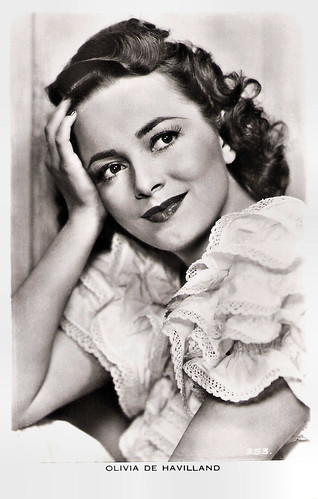
British Real Photograph postcard, no. 253.
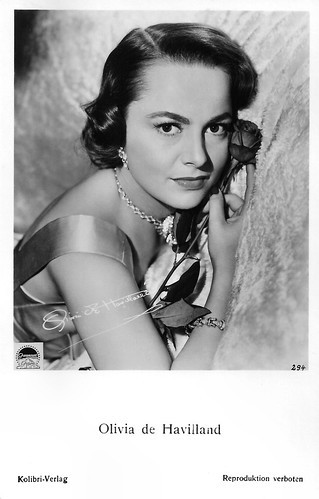
German postcard by Kolibri-Verlag, no. 294. Photo: Paramount.
An intense crush on Errol Flynn
Olivia Mary de Havilland was born in 1916, in Tokyo, Japan, to British parents. Her mother was the former film and stage actress Lilian Fontaine (Lilian Augusta Ruse), and her father was an English professor and patent attorney, Walter Augustus de Havilland. He was the author of the 1910 book The ABC of Go, which provides a detailed and comprehensive description of the Japanese board game. Her sister, Joan, later to become famous as Joan Fontaine, was born the following year.
Her surname comes from her paternal grandfather, whose family was from Guernsey in the Channel Islands. Her parents divorced when Olivia was just three years old, and she moved with her mother and sister to Saratoga, California. At her high school, she fell prey to the acting bug. She made her acting debut in amateur theatre in Alice in Wonderland.
After graduating, Olivia enrolled in Mills College in Oakland, where she participated in the school play A Midsummer Night's Dream and was spotted by Austrian director Max Reinhardt. She so impressed Reinhardt that he picked her up for both his stage version and, later, the Warner Bros. film version in 1935. She again was so impressive that Warner executives signed her to a seven-year contract.
No sooner had the ink dried on the contract than Olivia appeared in three more films: The Irish in Us (Lloyd Bacon, 1935) with James Cagney, Alibi Ike (Ray Enright, 1935), and Captain Blood (Michael Curtiz, 1935), with the man with whom her career would be most closely identified, heartthrob Errol Flynn.
They acted together in seven more films: The Adventures of Robin Hood (Michael Curtiz, William Keighley, 1938), The Charge of the Light Brigade (Michael Curtiz, 1936), Four's a Crowd (Michael Curtiz, 1938), Dodge City (Michael Curtiz, 1939), The Private Lives of Elizabeth and Essex (Michael Curtiz, 1939), Santa Fe Trail (Michael Curtiz, 1940), and They Died with Their Boots On (Raoul Walsh, 1941). Both are also featured in a ninth film, Thank Your Lucky Stars (David Butler, 1943), although in separate scenes. Years later, she confessed that she had an intense crush on Errol Flynn during the years of their filming, saying that it was hard to resist his charms.
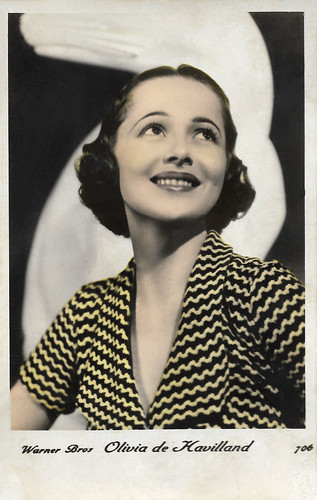
French postcard, no. 706. Photo: Warner Bros.
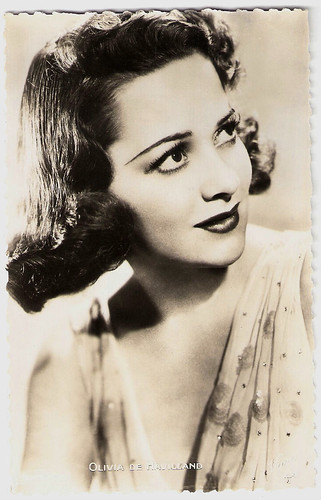
French postcard by Viny, no. 124. Photo: Warner Bros.
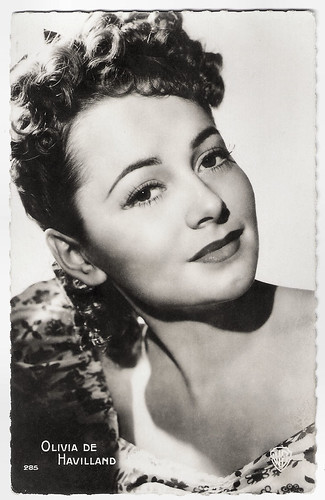
French postcard by Editions P.I., Paris, no. 285. Photo: Warner Bros.
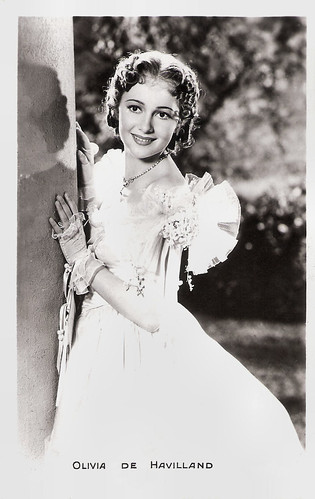
Vintage postcard. Photo: publicity still for The Charge of the Light Brigade (1936).
An all-out feud between two sisters
Olivia de Havilland achieved her initial popularity in romantic comedy films, such as The Great Garrick (1937), directed by James Whale. In 1939 Warner Bros. loaned her to David O. Selznick for the classic Gone with the Wind (Victor Fleming, 1939). Playing the sweet Melanie Hamilton, Olivia received her first nomination for an Academy Award for Best Supporting Actress, only to lose out to one of her co-stars in the film, Hattie McDaniel.
After GWTW, Olivia returned to Warner Bros. and continued to churn out films. In 1941 she played Emmy Brown opposite Charles Boyer in Hold Back the Dawn (Mitchell Leisen, 1941), which resulted in her second Oscar nomination, this time for Best Actress. Again she lost, this time to her sister Joan Fontaine for her role in Suspicion (Alfred Hitchcock, 1941).
Relations between the sisters were never strong and their mutual dislike and jealousy escalated into an all-out feud after Fontaine won the Oscar. Despite the fact that de Havilland went on to win two Academy Awards of her own, they remained estranged. In a rare act of reconciliation, Olivia and her sister Joan celebrated Christmas 1962 together along with their then-husbands and children.
Denny Jackson at IMDb: "After that strong showing (in Hold Back the Dawn), Olivia now demanded better, more substantial roles than the "sweet young thing" slot into which Warners had been fitting her. The studio responded by placing her on a six-month suspension, all of the studios at the time operating under the policy that players were nothing more than property to do with as they saw fit.
As if that weren't bad enough, when her contract with Warners was up, she was told that she would have to make up the time lost because of the suspension. Irate, she sued the studio, and for the length of the court battle she didn't appear in a single film. The result, however, was worth it. In a landmark decision, the court said not only that de Havilland did not have to make up the time, but that all performers were to be limited to a seven-year contract that would include any suspensions handed down. This became known as the 'de Havilland decision'; no longer could studios treat their performers as mere cattle."
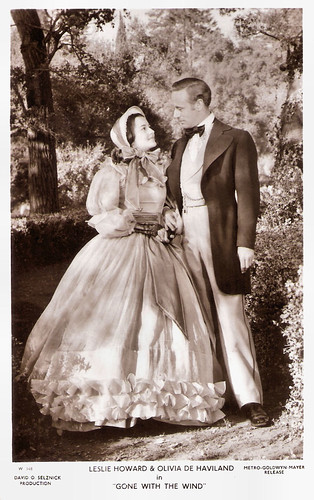
British postcard in the Picturegoer Series, London, no. W. 348. Photo: David O'Selznick Production / Metro-Goldwyn-Mayer. Publicity still for Gone with the Wind (Victor Fleming, 1939) with Leslie Howard.
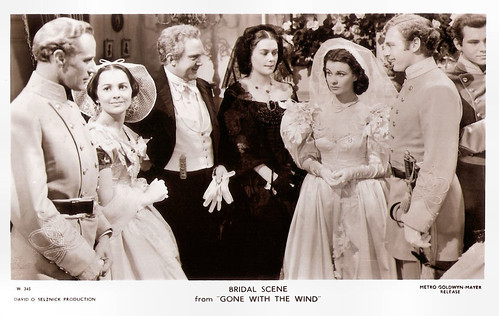
British postcard in the Picturegoer Series, London, no. W. 345. Photo: David O'Selznick Production / Metro-Goldwyn-Mayer. Publicity still for Gone with the Wind (Victor Fleming, 1939) with Leslie Howard and Vivien Leigh. Caption: Bridal scene from Gone with the Wind.
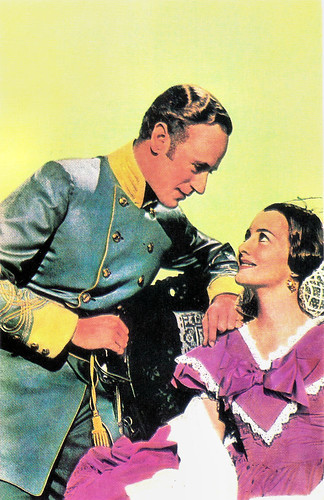
Romanian postcard by Casa Filmului Acin, no. 247. Photo: publicity still for Gone with the Wind (Victor Fleming, 1939) with Leslie Howard.
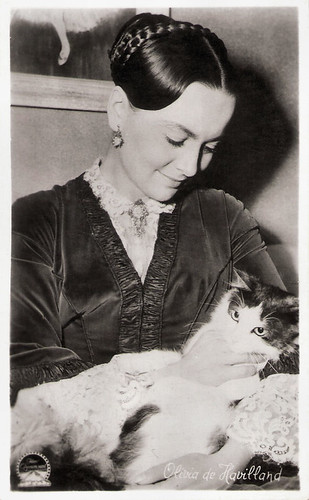
Belgian collectors card by De Beukelaer, Antwerp, no. A 35. Photo: Paramount. De Havilland is dressed in an outfit for The Heiress (William Wyler, 1949).
The Oldest Dame Commander of the Order of the British Empire
Returning to screen in 1946, Olivia de Havilland made up for lost time by appearing in four films, one of which finally won her the Oscar that had so long eluded her. It was the romantic drama To Each His Own (Mitchell Leisen, 1946), in which she played Josephine Norris to the delight of critics and audiences alike. Olivia was the strongest performer in Hollywood for the balance of the 1940s.
In 1948 she turned in another strong showing in The Snake Pit (Anatole Litvak, 1948) as Virginia Cunningham, a woman suffering a mental breakdown. The end result was another Oscar nomination for Best Actress, but she lost to Jane Wyman in Johnny Belinda (Jean Negulesco, 1948). As in the two previous years, she made only one film in 1949, but she again won a nomination and the Academy Award for Best Actress for The Heiress (William Wyler, 1949) with Montgomery Clift.
After a three-year hiatus, de Havilland returned to star in My Cousin Rachel (Henry Koster, 1952) with Richard Burton. From that point on, she made few appearances on the screen but was seen on Broadway and in some television shows. In the cinema, she was seen in the romantic drama Light in the Piazza (Guy Green, 1962), and the psychological thriller Hush… Hush, Sweet Charlotte (Robert Aldrich, 1964) opposite Bette Davis.
Her last screen appearance was as the Queen Mother in The Fifth Musketeer (Ken Annakin, 1979), and her final career appearance was in the TV movie The Woman He Loved (Charles Jarrott, 1988) about the love story between American divorcee Wallis Simpson and Edward VII.
Olivia de Havilland married and divorced twice: her first husband was writer Marcus Goodrich (1946-1953) and her second writer-husband was Pierre Galante (1955-1979), an executive editor for the French journal Paris Match. With both husbands, she had a child. She lost her son, Benjamin Goodrich (1949), to Hodgkin's disease in 1991. With Galante, she had daughter Gisèle Galante (1956). The former couple remained close friends, and after Galante became ill with cancer, she nursed him until his death in 1998.
Since the mid-1950s, she lives in Paris in France. In 1962, she showed flair as a writer with 'Every Frenchman Has One', a light-hearted autobiographical account of her attempts at adapting to French life. Two weeks before her 101st birthday, she was appointed Dame Commander of the Order of the British Empire in the 2017 Birthday Honours by Queen Elizabeth II for services to Drama. She is the oldest woman ever to receive the honour. In a statement, she called it "the most gratifying of birthday presents." Today, Olivia de Havilland enjoys a quiet retirement in Paris.
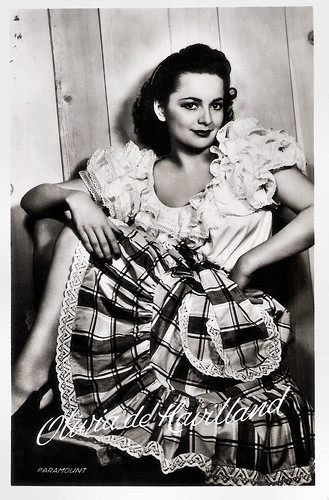
Dutch postcard by Foto-archief Film en Toneel, no. 3283. Photo: Paramount.
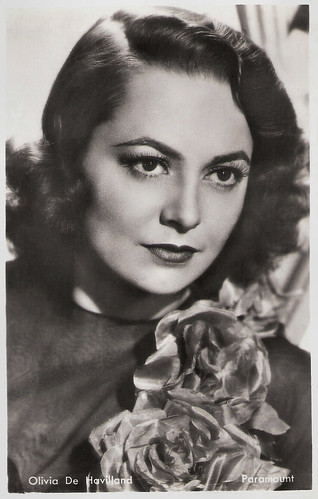
Dutch postcard by DRC. Photo: Paramount / mpea.
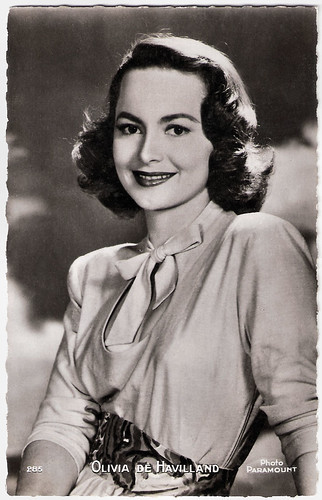
French postcard by Editions P.I., no. 285. Photo: Paramount Pictures, 1950.

French postcard by Editions P.I., Paris, offered by Les Carbone Korès 'Carboplane', no. 328. Photo: Paramount, 1953.
Sources: Denny Jackson (IMDb), Wikipedia and IMDb.





